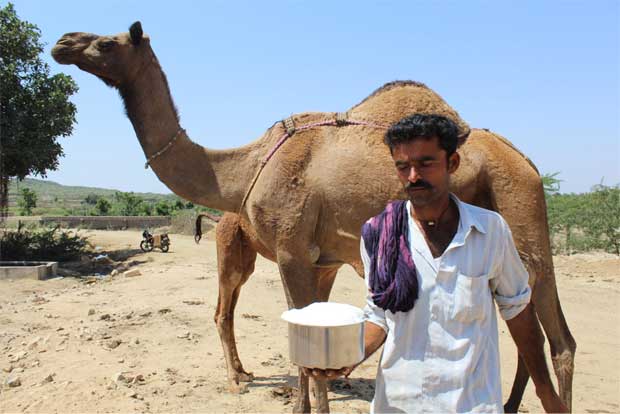
Camel milk has characteristics that make it not only good as a supplement in the human diet, but also under certain conditions. In this article we detail its properties and benefits. Have you heard of camel milk benefits? In some regions of the world it is popular, and sometimes even the only dairy-compatible food option.
Milk is a widely used food all over the planet. Traditionally, the most used is cow’s milk, although there is a huge variety of species that produce it, such is the case of milk obtained from camels, sheep, and buffaloes, among others.
Although they all provide valuable nutrients, the composition of the milk will depend on which species it is. In addition to this, it must be considered that their consumption depends on the geographical area and the availability in each region.
Regarding camel milk, a female generates from 2 to 25 liters per day, depending on the quality of the food and the amount of water she ingests. A distinctive feature of this species is that in situations of very low food availability, it can maintain a constant rate of production.
Camel Milk Properties
Like those from other animals, camel milk provides us with a host of beneficial nutrients for the body. Now, what is its chemical composition and what differences does it have with cow’s milk? Below we detail it.
Mineral Salts And Vitamins
Except for sodium, they are the same as those found in bovine milk, and in similar amounts. The salt content varies in concentration up to 5% in situations of water restriction.
A glass (250 milliliters) of camel milk supplies 150 calories, contains the same amount of calcium as seven sardines with bones, and as much potassium as a banana. Its vitamins are the same as those found in bovine milk, but in different proportions. It provides less riboflavin, folic acid and pantothenic acid, while providing up to five times more niacin and vitamin C.
According to the World Food and Agriculture Organization (FAO), this milk represents a vital source of vitamin C for people living in arid and semi-arid areas. These populations often cannot obtain it from fruits and vegetables.
Proteins And Lipids
Camel milk proteins are similar to those contained in bovine milk. Its concentration varies from 3.5 to 4.5 grams per deciliter. Also, a glass of camel milk contains as much protein as an egg.
Regarding fat, camel milk has a content of 1.8 to 2 grams per deciliter, which consists of unsaturated fatty acids. In 250 milliliters of this milk there is less cholesterol than in 100 grams of fish, and less fat than in 250 grams of beef.
Carbohydrates
The lactose content varies according to the water intake of the animal. When the liquid they drink is restricted, the liquid content decreases by up to 5%, so the milk tastes less sweet.
Conclusion
Finally, the ingestion of camel milk contributes to maintaining optimal levels of bone calcium, an effect that is accompanied by its lactose content. This represents a bone strengthening option for women at high risk of osteoporosis.
Although its consumption is not so popular all over the world, camel milk has characteristics that make it ideal in the human diet. In addition, it is an excellent ally in the prevention and improvement of various health problems. For the prevention of osteoporosis and allergies and intolerance, it is a key ally.
It’s not easy to get in any region, but if you get the chance, you should give it a try. It is good to broaden the palate and much more if it is a food that seems to have great benefits for the body.

Lifebing is driven by an unrelenting passion for promoting health and well-being, our team is wholly committed to curating exceptional content and immersive experiences.
